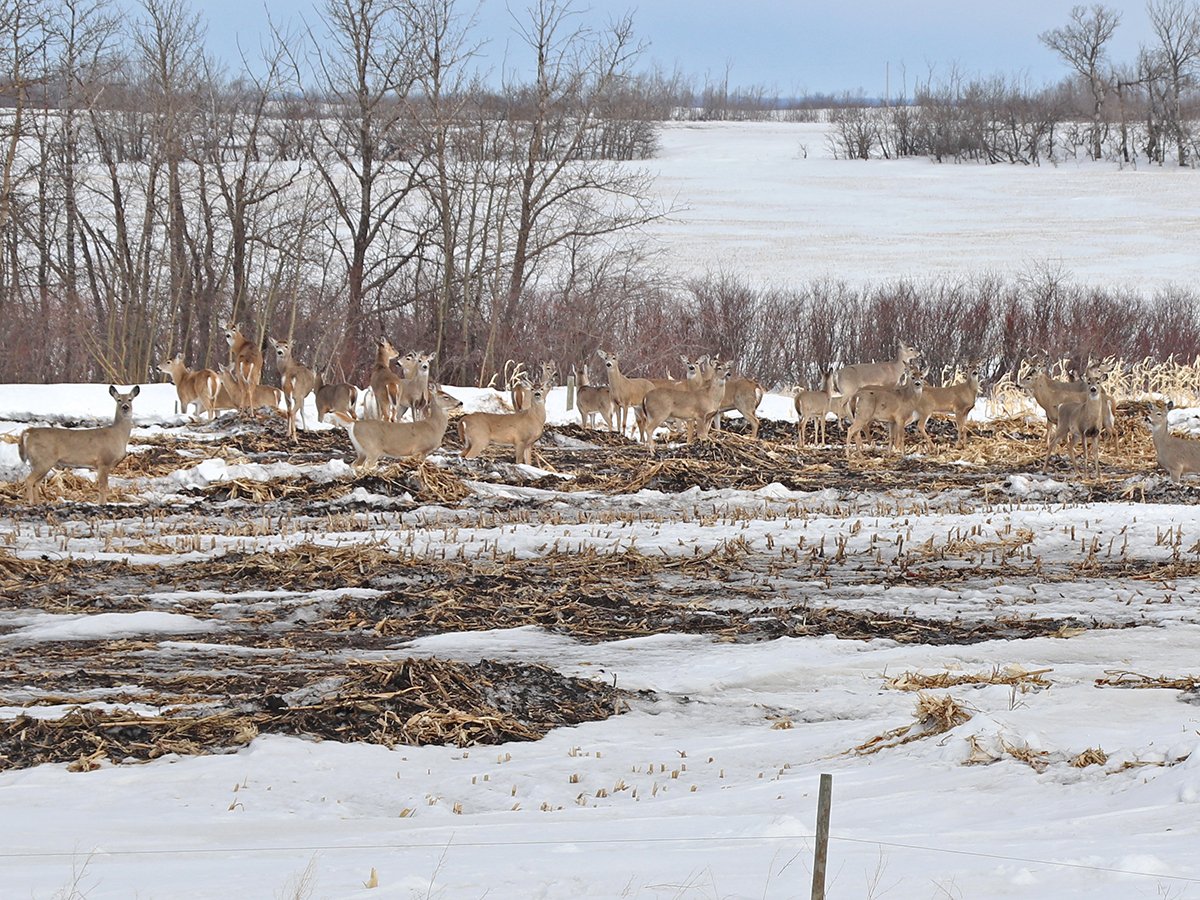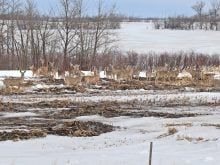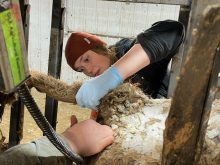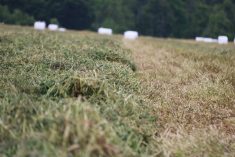A cattle feed additive shows promise in reducing methane emissions by the animals, according to research by an Agriculture Canada scientist in Lethbridge.
Karen Beauchemin, who specializes in ruminant nutrition, has been working with inhibitor 3-nitrooxypropanol (NOP), which is a compound synthesized by a Swiss company.
The compound interferes with normal ruminant digestion so that rumen organisms have less ability to synthesize methane. That methane energy shifts to a more usable form for the animal, so more is used internally and less is expelled.
“Obviously there are hoops to go through in registration and questions such as pricing and mode of use in the cow-calf sector that would affect industry uptake, but it is a very promising emission control alternative that could be available within three to five years,” Beauchemin said in a news release about ongoing emissions research.
Read Also

Foot-and-mouth disease planning must account for wildlife
Our country’s classification as FMD-free by the World Organization for Animal Health has significant and important implications for accessing foreign markets.
Her results showed that adding NOP to a standard backgrounding or feedlot diet could reduce methane by as much as 40 percent.
Karen Koenig, also a ruminant nutritionist, is working on diet manipulation as a way to reduce ammonia emissions. She said overfeeding protein increases ammonia emissions, and excess protein can occur through the feeding of dried distillers grain.
DDGs are being used as a substitute for grain as an energy source in some cases, but if they make up 20 percent or more of the ration, “they’re overfeeding nitrogen, phosphorus, sulfur and probably a number of other elements,” said Koenig. “The big concerns are nitrogen and phosphorus.”
She is studying how tannins in feed bind to proteins so they remain longer in the animal’s gastrointestinal tract and are excreted as manure rather than urine. In feces, the proteins are less prone to degradation and loss as ammonia.
“Then we have a more valuable manure, in terms of fertilization, and better capture of the nitrogen on-farm,” said Koenig.
She has conducted several studies with tannins and has found that they can comprise up to 2.5 percent of dietary dry matter without affecting the animal’s feed intake.
While tannins don’t affect the amount of nitrogen excreted, they make the manure more valuable.
Koenig said if regulations change to make phosphorus the defining factor for how much manure can be spread, then a higher nitrogen concentration relative to phosphorus will be even more important to producers.















